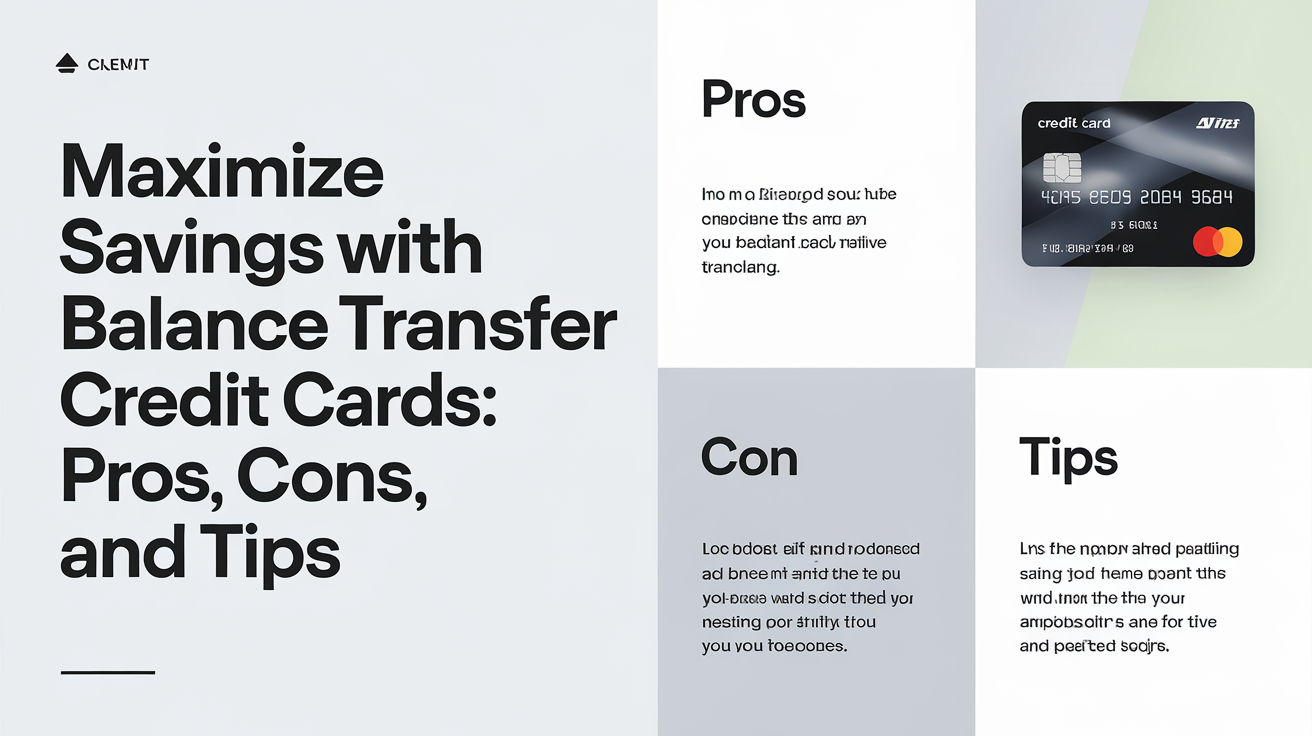Maximize Your Financial Health with Balance Transfer Credit Cards
At O1ne Mortgage, we prioritize consumer credit and finance education to help you make the best financial decisions. Balance transfer credit cards can be a powerful tool to save money and manage debt effectively, but they must be used wisely. In this blog, we will explore the pros and cons of balance transfer credit cards, how to choose the right one, and the steps to perform a balance transfer. For any mortgage service needs, feel free to call us at 213-732-3074.
Pros of a Balance Transfer
Save Money on Interest
The most significant advantage of a balance transfer credit card is the potential to save money on interest. These cards often come with a no- or low-interest promotional period, allowing you to transfer balances from other cards and pay off the balance at a much lower rate. By paying off the new balance before the standard annual percentage rate (APR) kicks in, you can save a substantial amount in interest.
Pay Off Debt More Quickly
Using a balance transfer credit card can be part of a disciplined strategy to pay off debt faster. By paying less interest, you can focus on reducing the principal amount more quickly. Automating payments ensures you are never late, and your last planned payment arrives before the promotional rate expires.
Consolidate Your Debt
A balance transfer credit card can also serve as a debt consolidation tool. By moving multiple accounts and due dates to a single payment with a lower interest rate, you can streamline your financial life and ensure timely payments.
Cons of a Balance Transfer
Balance Transfer Fee
Most balance transfer credit cards charge a fee of 3% to 5% of the amount transferred. This fee usually applies to transfers made shortly after opening the card. It’s essential to consider this cost when evaluating the benefits of a balance transfer.
Low Interest Rate Is Temporary
The promotional interest rate period is temporary, typically ranging from 12 to 21 months. If you do not pay off the balance transfer by the end of this period, your APR will increase. It’s crucial to calculate whether the savings during the promotional period outweigh the fees and potential higher interest rates later.
Potential for More Debt
If a balance transfer card tempts you to resume using the cards that were paid off, you could end up with more debt than before. It’s essential to have a plan and the discipline to follow it to avoid accumulating additional debt.
You May Need a High Credit Score
Qualifying for a balance transfer card typically requires a good to excellent credit score. If your credit score is not in this range, a debt consolidation loan might be a better option, especially if you can secure a lower rate than your current debt.
How to Choose a Balance Transfer Credit Card
Find the Right Credit Card Issuer
Generally, you cannot transfer a balance from one account to a balance transfer card from the same issuer. Look for a balance transfer card from a different issuer that offers the terms and benefits you need.
Check the Introductory Period Length
Calculate how long it will take to repay the transferred debt. If the promotional rate period is not long enough, it might not be the best choice. For larger balances, seek the longest introductory period available.
Consider Fees
Balance transfer fees can vary, with lower fees often available for immediate transfers. Be aware of other potential fees, such as annual fees, late fees, or foreign transaction fees, and consider whether they are worth it for your situation.
How to Do a Balance Transfer
Some card issuers allow you to include balance transfer details in your application. If not, you can initiate a balance transfer online or by phone after receiving your card. Here’s how:
- Log in to your credit card account or call your card issuer.
- Provide the information for the accounts you want to transfer and the amount to transfer. Prioritize transferring balances with the highest APRs if your new card’s credit limit is insufficient for all your debt.
- Continue paying your existing credit card bills until you receive confirmation that the transfer is complete. This process typically takes a few days, though some issuers advise allowing several weeks.
The Bottom Line
A balance transfer card can help you save on interest and pay off debt, but it’s essential to understand the terms and have a plan. If you have a good credit score (FICO 8 score of 670 or higher) and a strategy for paying off the debt before the promotional APR ends, a balance transfer card can be a valuable tool. However, it is not the right solution for everyone, and not everyone qualifies.
At O1ne Mortgage, we are here to help you navigate your financial journey. For any mortgage service needs, call us at 213-732-3074. Our team of experts is ready to assist you in making the best financial decisions for your future.

